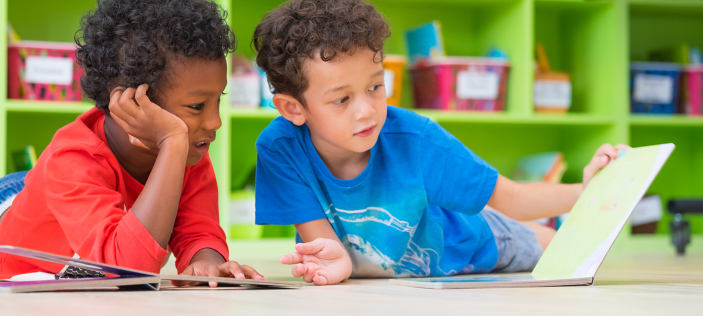
Analysis of the papers can take many angles and I don’t hope to cover them all in this series of blogs; instead, I intend to use an analysis of the reading SATs to allow for insights into our current teaching practices in the hope of developing and sharpening classroom pedagogy.
If I miss anything of particular interest, please do get in touch, and I will try to explore that avenue.
Neglected non-fiction?
Looking back through the post-2016 SATs archives, we now have two test papers where a non-fiction piece was presented in position 2 e.g. the second text in the test paper.
In 2017, the children were presented with ‘Swimming the English Channel’. This text comes from an unknown origin (although the images are attributed to various sources, the text is not attributed to a specific source or author) and comprised of: a biographical piece about the first successful Channel swimmer; a relatively informal ‘question and answer’ piece; a short summary of David William’s charity swimming escapades and a brief information section on the dangers of swimming the channel. In 2019, the second position was occupied by a ‘Fact Sheet: About Bumblebees’ – a piece adapted from an original publication by the Bumblebee Conservation Trust (see reading paper for exact location of source). Within this text, the children were presented with a fairly standard pseudo-persuasive text outlining the role of bumblebees in nature and why the human race depends upon them, as well as information about bumblebees and guidance on how we can help to protect the species.
Although outwardly, the texts look quite different, on closer inspection, they were remarkably similar in many aspects, including: Lexile measure (both scored between 1000-1100L); percentage of 1& 2 clause sentences (72% vs 73%); percentage of 3+ clause sentences (26% vs 27%); longest sentence (both 35 words); words containing 2+ syllables (38% in both texts). There was a minor difference in the average sentence length, with the Bumblebee text clocking up an average of 15 words per sentence, while the swimming text exceeded this with an average of 18 words per sentence. In this respect, we may consider the swimming text to have been a tad trickier.
None of this explains then the 7% drop in national correct response rates between the 2017 and 2019 non-fiction texts (2017 average correct response for the non-fiction text = 74.3%; 2019 average correct response rate for the non-fiction text = 67.3%).
In essence, despite the comparable nature of the texts (with the swimming text perhaps being arguably a little trickier in some aspects), children performed considerably worse on the 2019 non-fiction text, than the 2017 non-fiction text.
Interestingly, this drop was not mirrored in the fiction texts. At a national level, children appeared to improve their reading of fiction between 2017-2019 (the average correct response rate for questions pertaining to the first text in 2017 – Gaby to the Rescue – was 76.3%, while the correct response rate for questions pertaining to the first text in 2019 – The Park – was 81%. This equates to 3.7% increase).
How can this ‘bee’? (excuse the pun!)
Again, the answer is not clear. Indeed, the reasons will be manifold. Perhaps the questions were harder this year? I am yet to explore the test from this aspect. Perhaps the mark scheme was more pedantic (I know there has been some debate regarding this point). It is reasonable to assume that both of these points play a role, however I would argue that there must be more factors at play to yield such a decline in text-specific reading scores than can be attributed to these singular causes.
I would urge teachers to reflect once again on their own practice, after all, this is the only thing that we as teachers have real control over. Certainly, I would urge teachers to consider the balance of fiction/non-fiction reading that they have focused on with their children this year. My regular classroom trips would suggest that, over the last few years, there has been an increasingly disproportionate push towards fiction, rather than non-fiction discussion and analysis in the classroom. You may disagree. In truth, I only tend to have the privilege of joining English lessons. Some may argue that recent years have seen a drive for non-fiction reading to feature more within other curriculum subjects, rather than specifically in English lessons, meaning that through my limited experience, I have gained a skewed impression of the balance.
If, through reflection, you conclude that non-fiction has had very limited time in the limelight this year, then this scenario is perhaps not surprising. In recent years, the waters surrounding best-practice for teaching of non-fiction reading and writing have become muddied, to say the least. The old routines for teaching text types (e.g. instructional writing, reports, recounts, explanations etc) have been questioned, and as a result, some teachers may have felt the need to abandon old practices before they have had a chance to consider the practices and approaches that will take their place. In addition, there is the age-old problem of text availability. Finding good models to support reading and writing of non-fiction pieces has always been a challenge. And now, with the abundance of amazing fiction that is available to tempt us, perhaps we are drawn more towards building our units around fiction texts, than non-fiction texts? Even when there are great texts available (and believe me, the non-fiction market is flourishing) perhaps teachers feel less confident in identifying an appropriately pitched non-fiction piece than they do a fiction text? There may be further reasons…my purpose here is to prompt colleagues into reflecting on this point, and to urge them to consider strengths, challenges and areas for development within their own practice.
Even when non-fiction is a feature of the reading repertoire, a further line of enquiry could be to ask how confident teachers are in using appropriate pedagogy to support children in entering the world of non-fiction? As referenced in my last blog, one of the most powerful strategies that we have encountered in recent years to allow pupils to access the meaning of texts is echo reading. Echo reading works when the children are invited to echo back a text that has been read by an expert reader (ie. the teacher), who has modelled the appropriate prosody thus allowing the meaning of the text to be made clear. This reflection brings me back to the questions asked in the previous blog:
- How often to pupils hear the teacher modelling expert prosody when reading aloud a non-fiction piece?
- Do teachers – like many children – reserve their ‘performance reading voice’ for fiction, as opposed to non-fiction texts?
Although these questions won’t provide all the answers, they may well help teachers to start reflecting on their practices so that going forwards, fiction and non-fiction texts find themselves on an equal footing once again.



